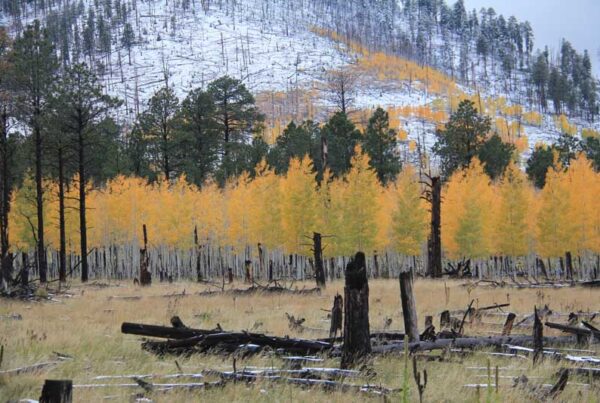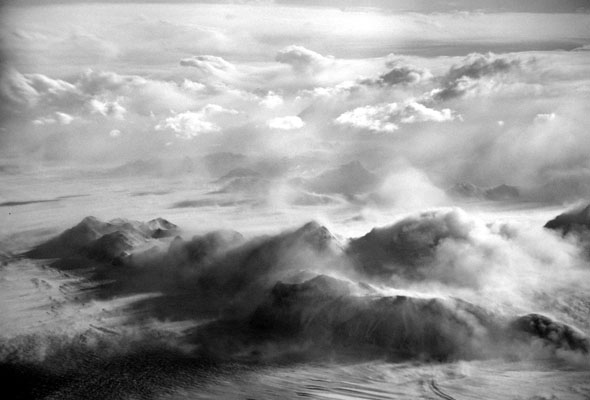The Antarctic silence is mentioned by many of those who have travelled to the deep field. For example, Edward Wilson, Scott’s trailmate on both the first and second expeditions penned a poem called The Barrier Silence, which was published in The South Polar Times, printed at the winter quarters at Cape Evans:
The silence was deep with a breath like sleep
As our sled runners slid on the snow,
But the fate-full fall of our fur-clad feet
Struck mute like a silent blow
On a questioning ‘Hush?’ as the settling crust
Shrank shivering over the floe.
And a voice that was thick from a soul that seemed sick
Came back from the Barrier –‘Go!
For the secrets hidden are all forbidden
Till God means man to know.’
And this was the thought that the silence wrought,
As it scorched and froze us through,
That we were the men God meant to know
The heart of the Barrier snow,
By the heat of the sun, and the glow
And the glare from the glistening floe.
As it scorched and froze us through and through
With the bite of the drifting snow.

Sundogs (parhelia) frame the sun across McMurdo Sound. The atmospheric phemomenon is caused by defraction of light at 23 degrees from the sun through rod shaped ice crystals settling through the atmosphere.
Three navy helicopters arrived the next day. They would serve the camp, tasked with putting out field parties in the morning and then picking them up at the end of the day to bring us back to base camp, where we would sleep and eat.
Two days after I arrived I was flying out to my first day in the field. My excitement was acute. I had picked a site about eight miles north of camp, a small island of rock on the eastern side of Shackleton Glacier named Taylor Nunatak. The helicopter dropped Phil Colbert and me, along with our survival gear, and flew away. Its rotor faded and then was no more.
For the first time in weeks, I was without the audible vibe of engines, whether screaming from aircraft or just humming to themselves somewhere in the background, quietly unnoticed. It wasn’t apparent at first, for as Phil and I scurried over to the margin of the glacier, we generated sounds of our own—footsteps, the click of our ice axes, the swish of our clothes. We stopped on a terrace of rock and looked out at Shackleton Glacier across a spectacular ice fall that gave the appearance of rapids in a wild river, except that it was motionless.
Standing there, I suddenly became aware of the silence. It was behind me just at my shoulder. It went beyond the icefall as far as I could see. It was out there everywhere. The stillness was profound. The soft rustling of my parka seemed amplified. I held stone still. The sound of breath issuing through my nostrils filled my ears. I held my breath. The silence pressed in on all sides. It was palpable
In my state of auditory suspension the icefall before me was all the more dramatic. It occurred at a point where a small ridge of rock projected from Taylor Nunatak into Shackleton Glacier. The glacier margin first reared up over this obstacle, broke into a jumble of blue seracs (ice blocks), then plunged chaotically down a steep, two hundred–foot scoop at the margin of the glacier, before molding smoothly back into the flow. In human time the icefall was a static sculpture of Nature’s grand design, in glacier time (moving about five feet per day) it was a rapids in a smoothly flowing river.
As Phil and I stood there savoring our solitude, a sudden thwack broke the silence, like the shot of a .22-caliber rifle. We jumped and looked around, but there was no apparent source of the sound. A couple of minutes later another shot rang out. This time we were sure that it had come from the direction of the ice fall. Then it happened again. The ice was popping, strained to its limit and fracturing, incrementally working its way down the gradient at less than a millimeter per pop. The ice fall defied the silence. The dead air sucked up its sound.
At last I was really out there, out there in a state of extreme isolation, even grace, with raw Nature everywhere on display. It was time to see what secrets the rocks would tell, and we went clomping up the outcrop, challenging the silence at every step.

Silence pervades pressure ridges in ice at the margin of Ross Island. Mount Discovery stands mute across McMurdo Sound.
Gallery – Sastrugi
Sastrigi is the name given to wind-blown patterns in snow, formed by the continuing processes of deposition and erosion of snow. The phenomenon is pervasive, producing a limitless variety of windswept patterns, begging to be framed.



Ed,
Reading your blog and looking at the photographs makes me regret that I was one of the few of your ASU Geology colleagues that didn’t get to Antarctica with you or Mike Malin. It looks like your book will be an excellent alternative, however. Glad to get the chance to see this handsome culmination of your career. Congratulations.
Jon Fink
Portland, OR